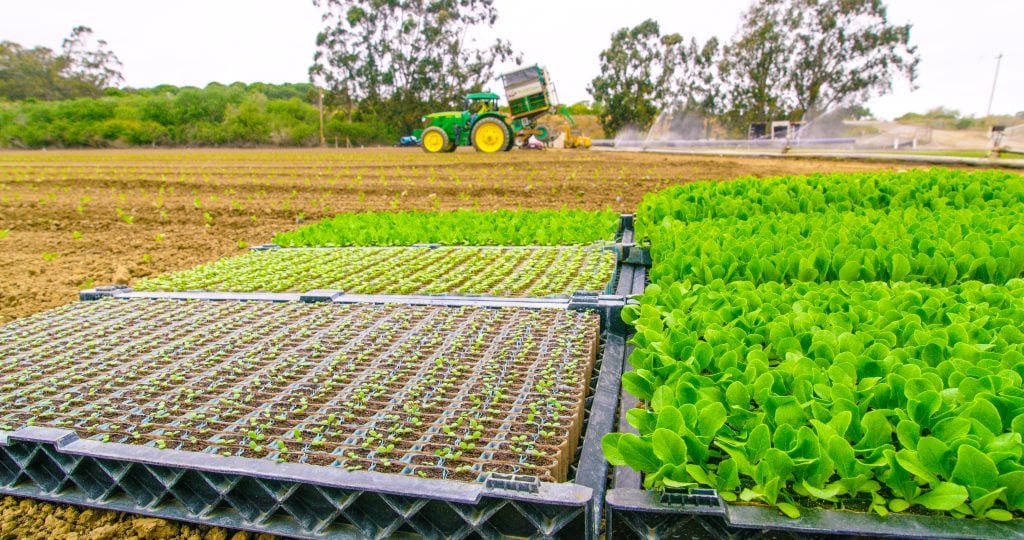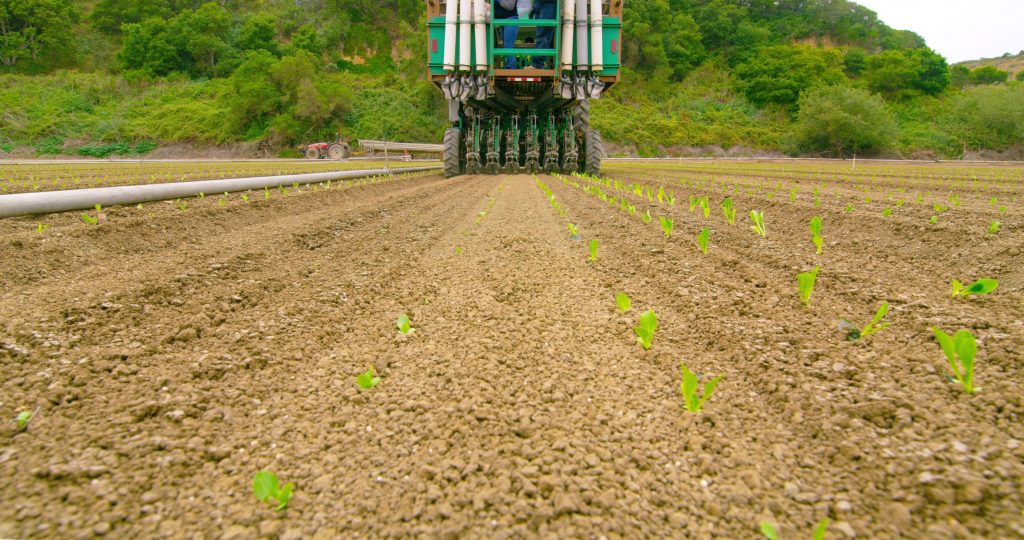One of the many benefits of the PlantTape automated transplanting system is the logistical flexibility it gives growers and greenhouse operators. Specifically, PlantTape seedlings can be planted at any time after the sowing process.
With conventional transplanting, plants and roots must be sufficiently developed to withstand being manually pulled from celled nursery trays. A transplant that is pulled too early can be damaged or destroyed.
Because PlantTape places transplants into the ground with minimal human touch and without disturbing the roots, seedlings can be planted at any time after sowing. Whether the seedling is at the cotyledon stage or with 5 true leaves, the PlantTape planting modules cut the tape between plants and place each into the soil, while the tape material protects and encapsulates the delicate roots.
Advantages to growers of the PlantTape system
Produce markets and weather conditions are volatile, and PlantTape’s versatility gives growers the ability to adapt planting schedules to navigate unpredictable events.
Potential planting scenarios and the PlantTape advantage
For example, a broccoli grower might have 20-day old seedlings in the greenhouse when she gets notice that two weeks of rain are moving in. With conventional methods, broccoli plants are too young and fragile to be pulled from their trays at 20 days, so the grower has no choice but to plant in the mud after the storm.
With the PlantTape system, in contrast, the grower can adjust her planting schedule to get the broccoli transplants into the ground before the rain arrives. The seedlings get the advantage of all the rain, and the workers won’t be potentially rained out, and don’t have to plant in the mud.

Planttape trays with seedlings at different ages
To use another example, a celery grower has 45-day old seedlings in the greenhouse when he learns that part of his crew is moving on in a week, leaving him short-staffed. (Read how PlantTape reduces transplanting labor requirements by 80%.)
Given the scarcity of skilled agricultural labor, the grower can’t hire more employees in time, and his celery is too young to plant immediately with conventional methods.
Again, PlantTape to the rescue. The grower decides to plant before the workers depart, and PlantTape handles the young celery seedlings just fine.

Six different stages of transplants from 1 week to 6 weeks old
A demonstration with romaine seedlings of different ages
To demonstrate PlantTape’s ability to transplant seedlings at almost any maturation stage, we recently loaded our transplanter with six lines of romaine, each line being a different aged plant, and planted it near Salinas, CA.
On the far left, a line of romaine sown one week prior, with cotyledons barely sprouting. On the far right, a line of romaine at 6 weeks with 4-5 true leaves and three-inch tall plants. In between were lines of romaine at 2, 3, 4, and 5 weeks.
As seen in the YouTube video, the PlantTape planting modules had no issue precisely placing each seedling into the soil, regardless of developmental stage.
When we checked in on the 6 lines two weeks (?) after planting, all seedlings were thriving.
To learn more about PlantTape, or to request a field demo, contact sales@planttape.com or call +1 (888) 272-6828